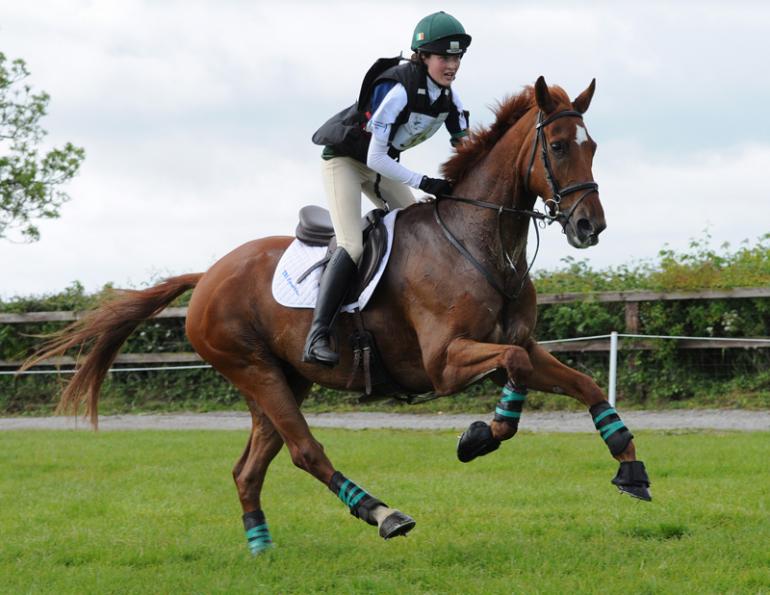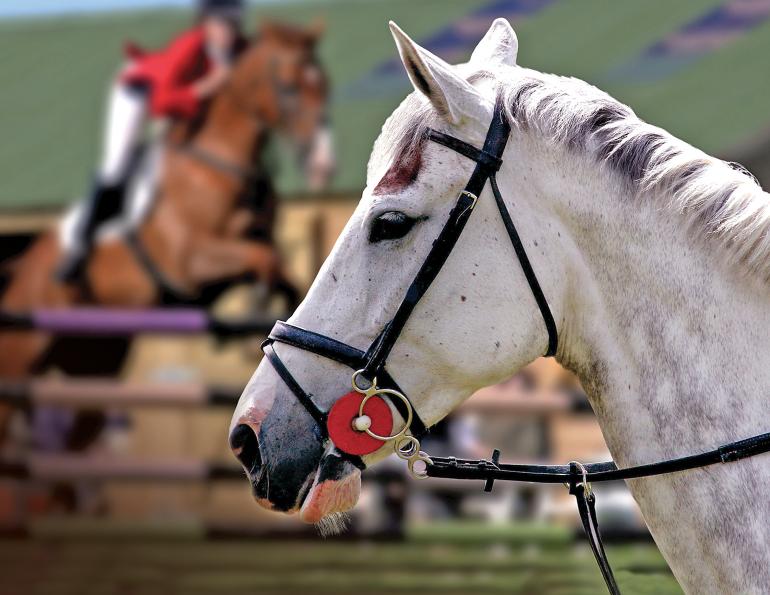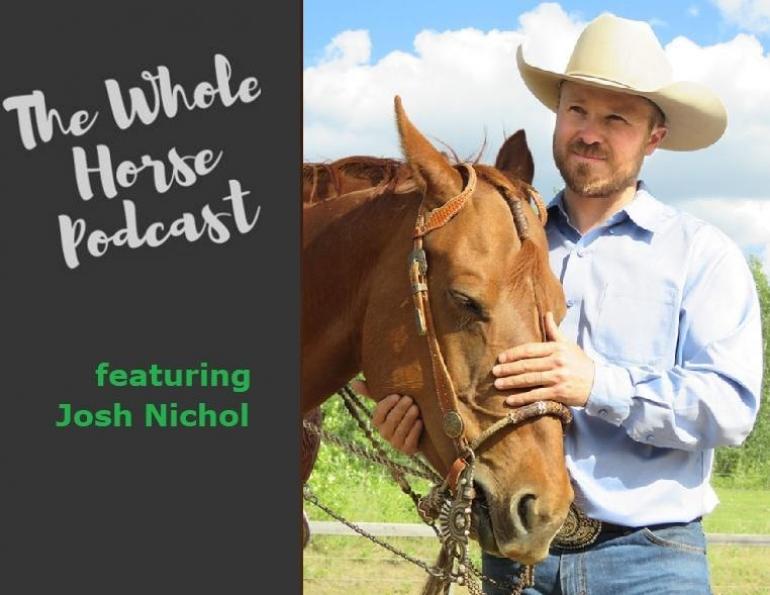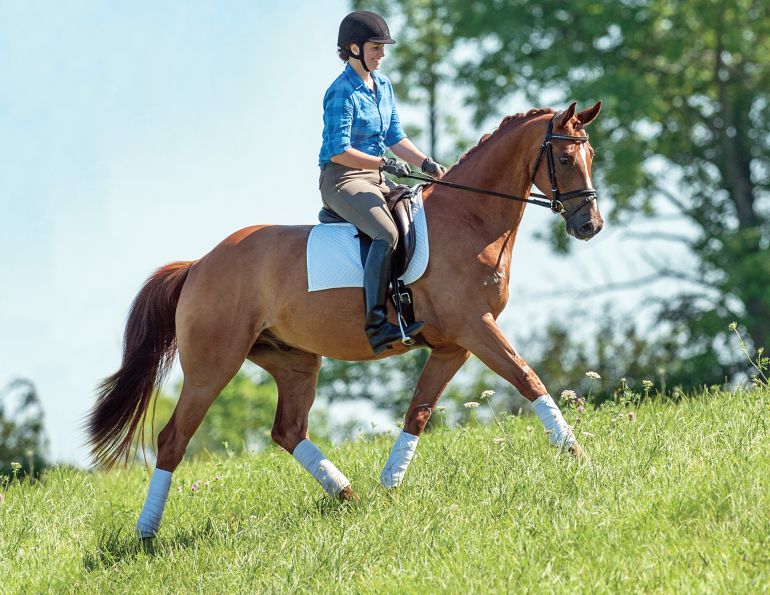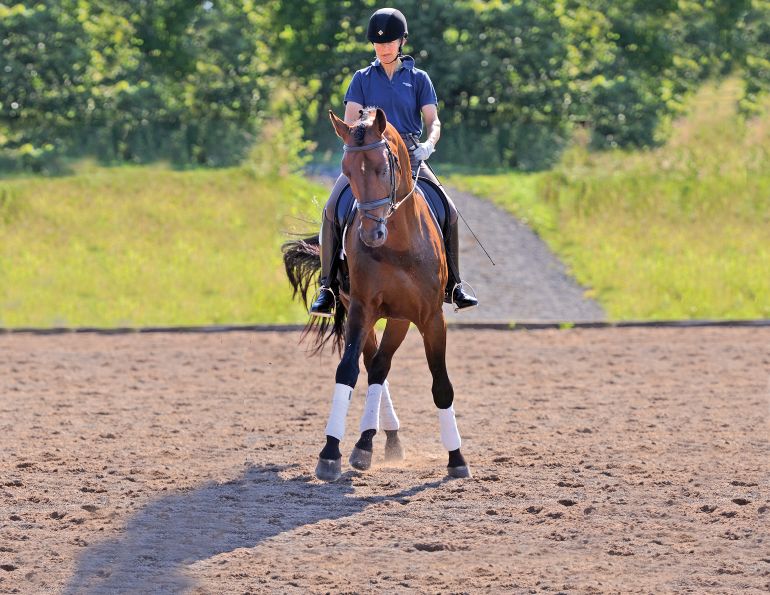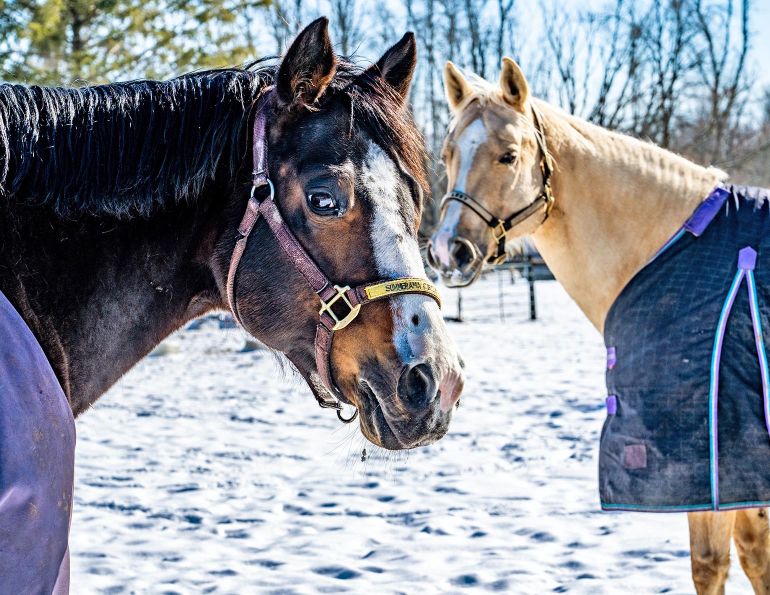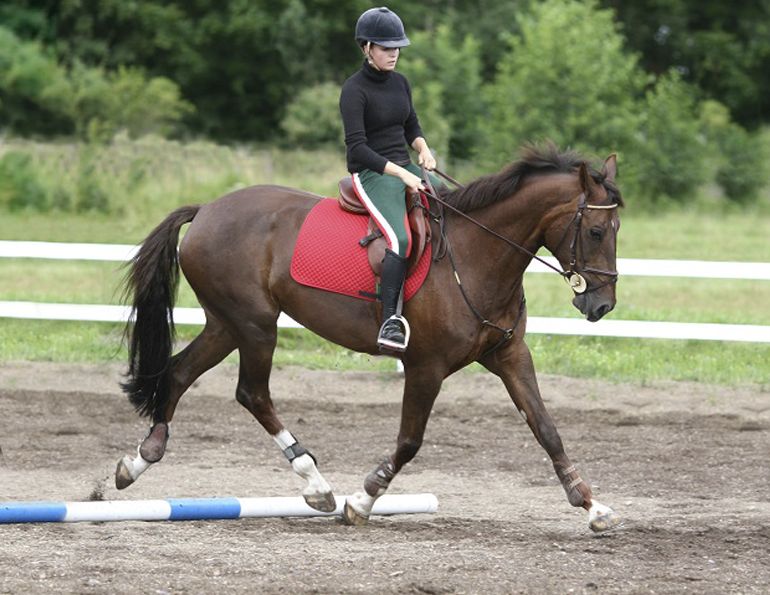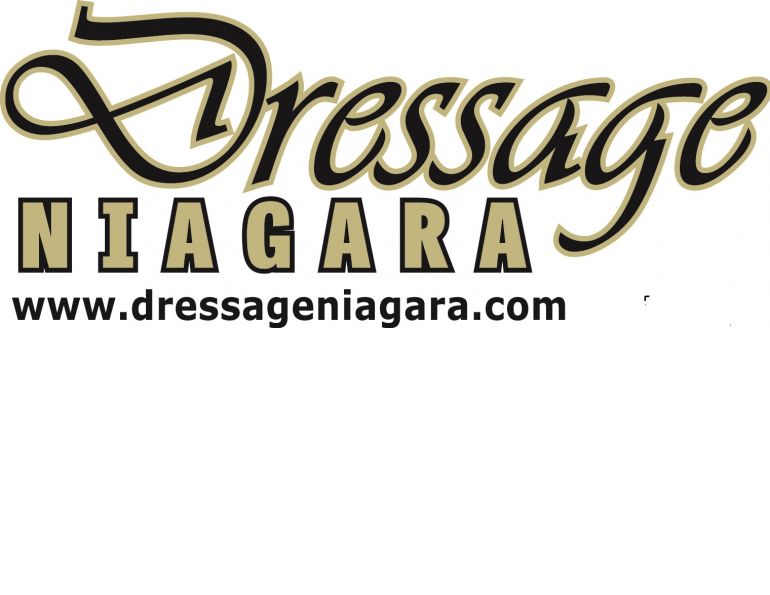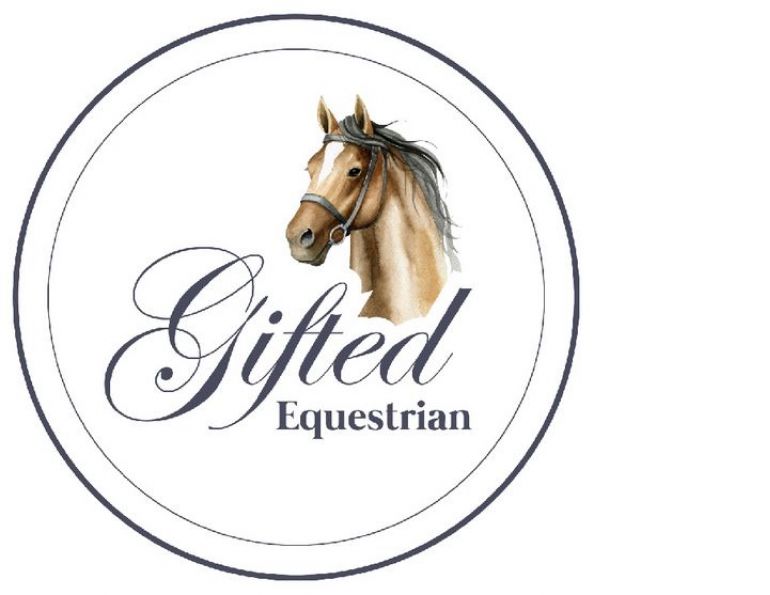By April Clay M.Ed., Registered Psychologist
We breathe more than 20,000 times a day. Most of the time, we don’t give it much thought, since we do it automatically and all seems to go well… except when it doesn’t.
Except when your breathing rate changes as a result of fear or stress.
Except when your horse starts to experience a very different version of you that begins to set off his fight-or-flight instinct.
Except when your ride becomes a mess and you’re at a loss as to how to calm down and get back on track.
At times like these you might start to think about your breathing. And that’s a good thing, because as much as breathing is an automatic process, we are also able to exert control over our breathing, and doing so can be very useful in sport and in life.
Why should you become an expert breather?
You will have more stamina. In the sporting world, energy is the gas that drives all performances. Unfortunately, stress and excess tension can zap a rider of this much-needed resource. Have you ever noticed how tiring it is to be nervous and anxious? That’s because when in this high state of alert your body uses a lot of energy. All of your resources go toward dealing with the stressor, and your performance comes second. If you reset your breathing a few wonderful things will happen. You will replenish your oxygen stores and you will be telling your brain that things are under control, you can handle this. Your mind will settle and clear, making it easier for you to make decisions. Your body will regain its power, thereby improving your riding potential.

If you are feeling stressed and nervous, your horse’s instincts will tell him there’s something to worry about. By resetting your breathing, both you and your horse will start to feel more relaxed and confident. Photo: Dreamstime/Donna Kilday
Your body is one big riding aid. If your body becomes impacted by stress, it will change how you communicate with your teammate, and these changes are usually not positive. When your stress response kicks in, it means more rapid breathing and increased muscle tension. Your thinking can become frenzied and distorted. Your horse, being a seasoned prey animal, will surely notice this transformation in you and wonder what’s up. Now you’re both nervous.
Learning to breathe correctly and invoking a relaxation response are powerful tools in regulating stress and intensity levels. Being able to effectively calm yourself means sending a message of calm to your horse. When you reverse out of the fight-or-flight alarm, you regain control over your muscles and your aids. The purpose of your ride becomes clearer and your horse, now able to turn off his own fight-or-flight alarm, can get his attention focused back on you.
You will manage your thoughts more effectively. When the fight or flight alarm kicks in, guess what you are focused on? Potential danger. What is scary and what can I do about it?
How will I survive? These thoughts are not positive-focused; they are threat-focused and tend to be negative. What if I make a mistake? What if the judge doesn’t like my horse? What if I make a fool of myself? When you reset your breath and replenish the oxygen to your brain, it will be easier to think more clearly and purposefully. You will be able to direct your thoughts back to your riding and your goals. This will give you a greater sense of control, which in turn will lead to greater feelings of confidence.
Effective Breathing How-To
Now that you know why you should learn to breathe effectively, here is your How-To guide:
Basic Practice: When stressed, we tend to breathe shallowly from the chest. There is a corresponding tightness in our upper body as we force the air in and out quickly. To breathe correctly, you want to engage the diaphragm. It’s that muscle that sits between your lungs and abdominal cavity.
Related: Podcast - Healthy Activitation and Embracing Discomfort with Jane Pike

When you’re feeling frazzled at a show, calm yourself using your Breath Reboot and feel your confidence and focus return. Photo: Dreamstime/Nadezda Murmakova
To begin, sit comfortably on a chair or bed and place one hand on your stomach and one hand on your chest. Breathe normally. At first, just watch and pay attention. Ask yourself a few questions about your breaths – you can call them the three Fs: How far down does it go?
How fast?
How full does it seem?
Which hand seems to move the most? If you are breathing shallowly, it will be the hand on your chest. If you are using your diaphragm, if will be your lower hand. Now rate your overall feeling of relaxation on a scale from one to ten, one being the most relaxed. This is your relaxation number.
Next, start to apply some direction to your breathing.
Focus on dropping your breathing low, as if you are breathing through your feet. As you are inhaling, it may be helpful to imagine that you are filling up three separate sections of your lungs. First, concentrate on your abdomen, making it expand with air. Next, fill the middle portion of your lungs by expanding the chest cavity and raising the rib cage and chest. Finally, allow the upper portion of your lungs to be filled and you will notice your upper chest expand and your shoulders rise slightly. When you feel “full,” begin to exhale by pulling the abdomen in (this is what pulls the diaphragm up), and you should notice your shoulders and upper chest drop as the air begins to leave your lungs. Make sure the exhalation is complete, forcing all the air out and letting go of all muscular tension as you do. On the exhale, you can try saying silently to yourself: As I breathe out I let go of all the tension in my body.
Do several repetitions of this form of breathing until you can feel a shift in your body and your relaxation number. Once you get the hang of doing it sitting, move to standing and then to the saddle. Remember to practice by tying it to something you already do, such as right after your morning coffee or just before you get out of the car at the barn. The idea is to build confidence through repetition. As your practice progresses, you should notice some very awesome things: a sense of calm, renewed energy, a slowing and clearing of your thoughts, and a general sense of well-being.
Connecting Breath: If you want to see just how your state impacts that of your teammate, try the “connecting breath.” While on horseback, breathe in slowly and think about letting your breath drop down into your saddle and through to your horse. Notice what this connection feels like, how your body begins to relax and mold itself to fit your teammate comfortably. With each breath, imagine this connection becoming stronger and more unified. You can do this exercise at a halt or a slow walk. The goal is to both practice your own relaxation in the saddle and also to notice how a change in you can effect a change in your horse. Many riders report noticing signs of relaxation in their horses such as slowing of movement, lowered neck, blowing out, and attentive but relaxed placement of ears. The connecting breath is a great tool to add to your daily pre-ride routine. It ensures both of you are starting from a place of calm connection.
Related: Finding Your Centre - Fitness for Horse Riders
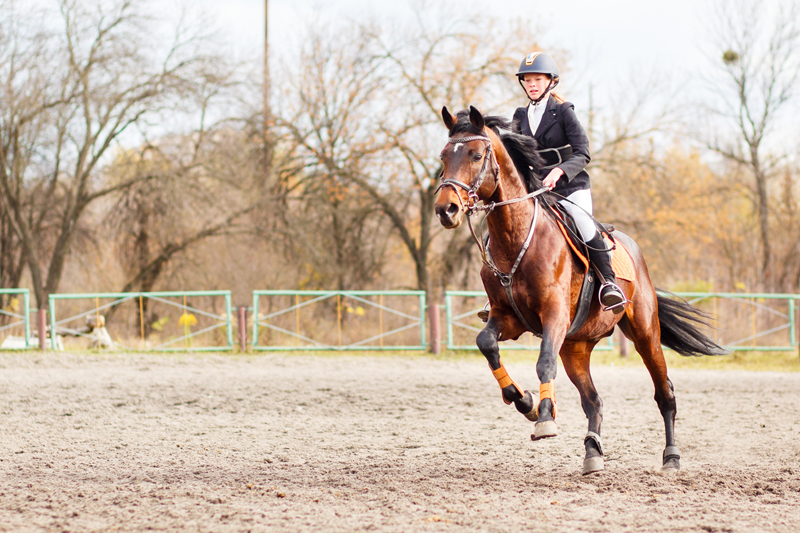
More effective breathing will keep you feeling in control and give you more energy for the task at hand. Photo: Shutterstock/Skumer
The Breath Reboot: Getting confident with breath regulation will take time, but the results are very worthwhile. It means you will have the knowledge that you can influence your body when you need to most. When you’ve gained confidence you’ll be able to use a shortened version called the “breath reboot.” It goes like this:
- Slowly inhale to a count of six.
- Then pause for a few seconds and slowly exhale for a count of eight.
- Repeat two to four times.
You will be surprised how effectively this can help you refocus. Use it at a show when feeling frazzled or nervous. Use it in between rounds to help let go of what has passed and prepare for what’s next.
In general, studies testing impact have noted the positive effects of breathing strategies on enhancing performance across a variety of sports. But it’s not a one-size-fits-all, so go ahead and experiment with several techniques. Find out what works for you and your teammate.
Related: How to Ride Better by Thinking Less
To read more by April Clay on this site, click here.
Main photo: Dreamstime/Unicornamira



